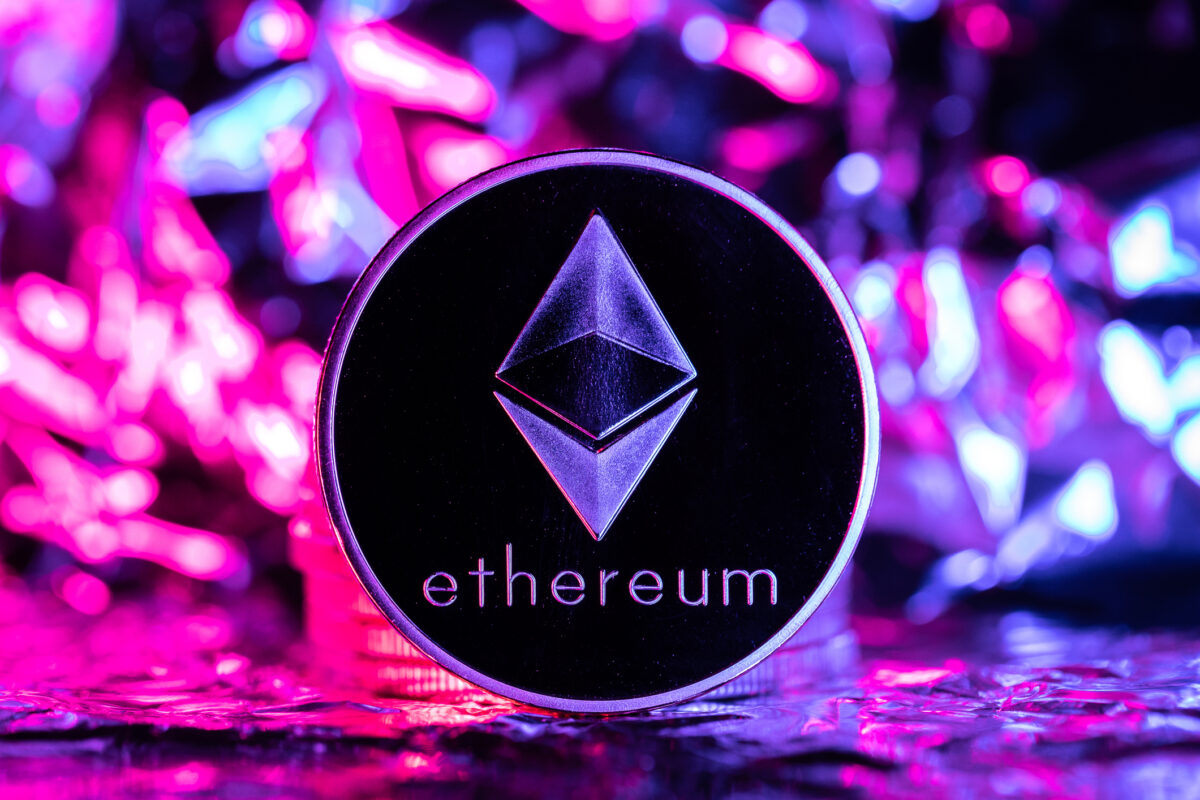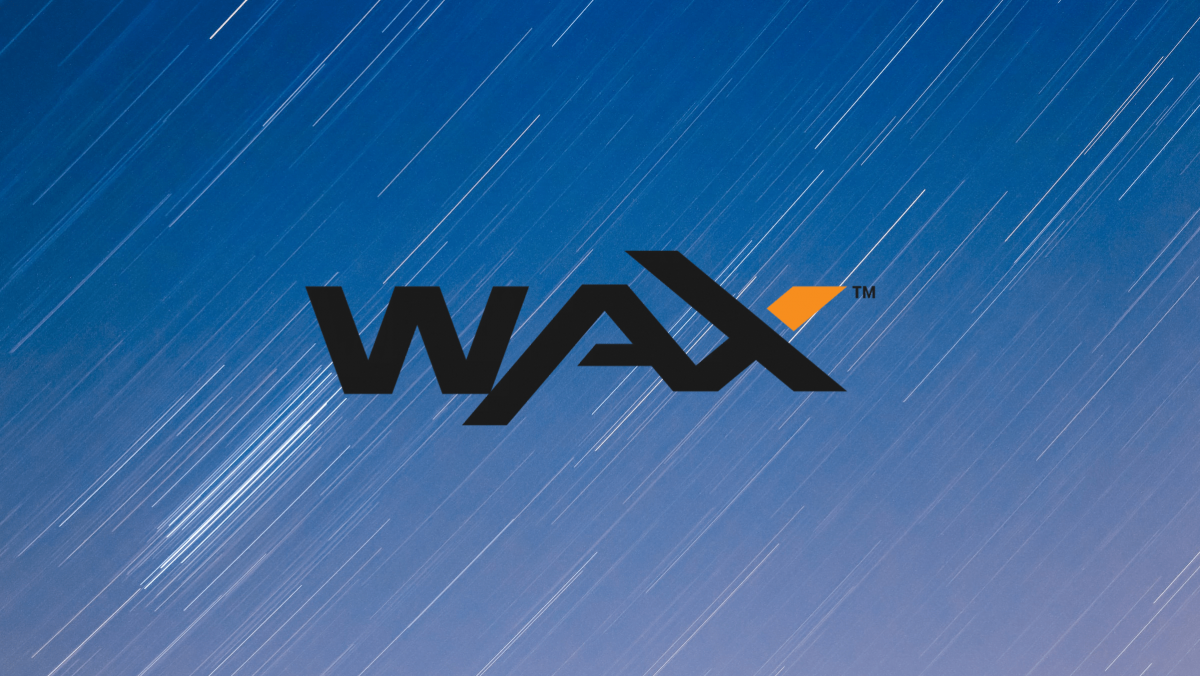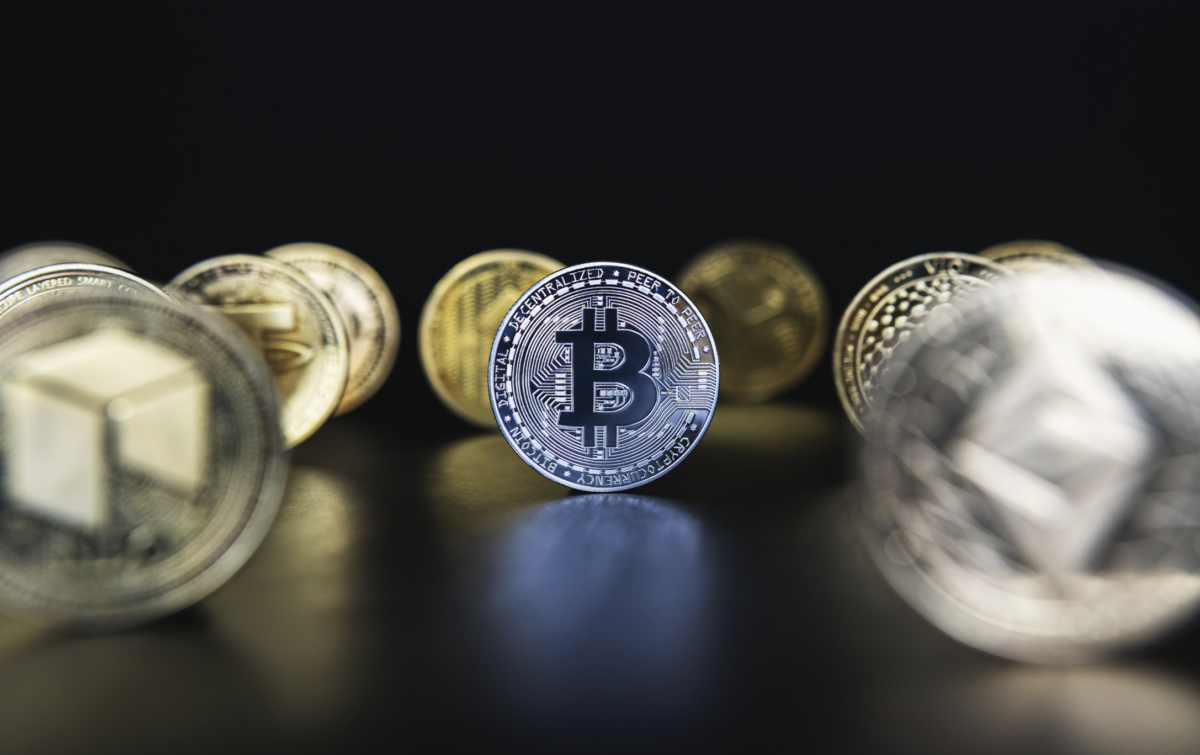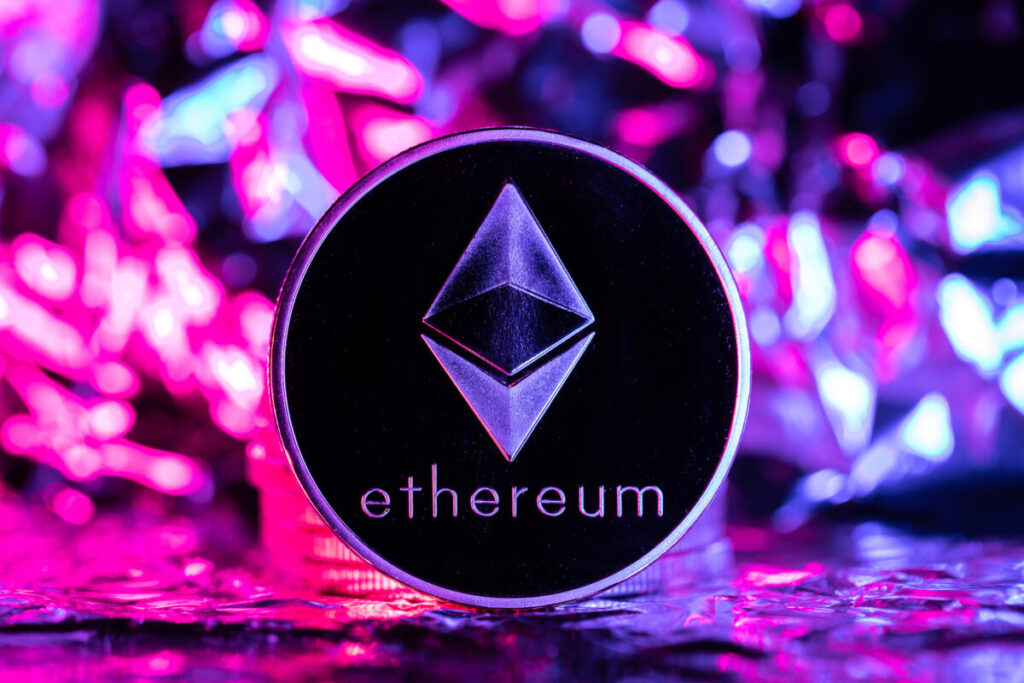When it comes to NFTs, the Ethereum blockchain is king. Considered by many to be the one-stop shop for NFTs, over the past year, it has quickly become the most talked about — and at times the most trafficked — blockchain in existence.
Yet, numerous other blockchains have grown in popularity within the NFT space. Considering the high transaction costs and environmental impact that the Ethereum blockchain presents, crypto-artists and NFT enthusiasts have continued to seek out new places to mint and trade NFTs.
But there are several crucial factors to consider when choosing what blockchain to mint on. Some of the most important points are network size, creator costs, consumer spending habits, security, and community input. So to provide a bit of clarity to the widespread and fast-paced world of Web3 tech, we’ve created a high-level summary of blockchains for NFTs.
Which blockchains support NFTs
Ethereum
Despite mounting competition, Ethereum remains the most popular NFT blockchain. The reasons are abundant: as a highly decentralized blockchain, it provides all the financial and legal services one typically needs for transactions without requiring intermediaries. It also houses some of the most popular NFT marketplaces (OpenSea), NFT projects (CryptoPunks and the Bored Ape Yacht Club), and NFT artists (Pak and Beeple).

Until recently, Ethereum required an exorbitant amount of energy to operate since it relied on a Proof-of-Work (PoW) consensus mechanism. Consensus mechanisms are the systems that allow a blockchain to operate in a decentralized manner, but in light of PoW’s notoriously energy-intensive operations, it uses cryptographic computations to validate transactions in the network. That’s one of the reasons why, on September 15, 2022, Ethereum switched to a consensus mechanism known as proof-of-stake (PoS) in an event called the merge. The blockchain’s energy needs plummeted by 99.5 percent as a result, and it now consumes less energy than even a simple Web2 platform like PayPal.
While some debate remains about how secure the new PoS system is compared to PoW, Ethereum is still considered a safe blockchain to use, with the merge opening the door for future upgrades that the Ethereum Foundation claims will further increase its security. Considering its popularity, security, decentralization, and ease of use, you should consider this blockchain first when deciding where to mint.
Solana
Founded in 2017 by Anatoly Yakovenko, Solana was built to solve the high costs and slow transaction speeds common in blockchains like Ethereum and Bitcoin. When it arrived on the scene, blockchains were severely limited in their processing capabilities and could only handle roughly 15 transactions per second (TPS).
Solana’s TPS now surpasses that of Visa, and even rivals Mastercard’s, earning it a firm spot as an industry leader regarding speed and scalability. The blockchain’s transaction fees are also quite low, making the network increasingly popular and one of the fastest-growing ecosystems in crypto. As of writing, SOL’s market cap was more than $10 billion.
Solana is also one of the fastest programmable blockchains in the crypto space. Its unique combination of proof-of-history (PoH) and proof-of-stake (PoS) consensus mechanisms remove the need for the complex cryptographic puzzles that power PoW mechanisms. PoH is a computational process that can cryptographically verify the passing of time between two events in the blockchain, which reduces validation times and fees. In terms of the Solana blockchain, it’s used to ensure that transactions are in the right order and found by the correct leader (validator).
Like Ethereum, Solana’s PoS system enables users to stake an amount of cryptocurrency for the chance to be randomly chosen as a block validator. Validators earn crypto (in this case, Solana’s native token, SOL) when they are selected. This incentivizes users to become stakers and rewards them for doing so. Thanks to Solana’s PoS and PoH mechanisms, its transaction fees and times are about as low as possible. However, while some major NFT marketplaces like Magic Eden operate on Solana, the chain isn’t as widely used as Ethereum, meaning there are both fewer marketplaces and people trading on the blockchain.
Tezos
Founded in 2017 by Kathleen and Arthur Breitman, Tezos is an open-source platform for assets and applications. Like other blockchains, it enables the creation of smart contracts and the building of decentralized applications (dApps). Tezos’ native token is XTZ. While the chain is popular with regard to NFTs, its crypto ranks around 40th in terms of market cap. But Tezos’ selling point has always been innovation, not market dominance.

One of the things that makes the Tezos blockchain unique is its ability to self-amend. This means it can improve itself over time via a formalized protocol upgrade process. Coupled with the fact that Tezos has long incentivized developers to build dApps on the platform, the chain is seen as a major leader in operability.
Similar to Solana and Ethereum, Tezos uses a PoS consensus mechanism to help reduce the computational work needed to verify blocks and transactions on the blockchain. Additionally, its transaction fees are lower than Ethereum’s (but more than Solana’s).
One of the first marketplaces on the blockchain, Hic et Nunc, was heralded as an economic alternative to Ethereum-centric marketplaces — until the platform shut down on November 14, 2021.
Tezos is a great place to start for those looking to mint batches of NFTs or large-scale collections. Currently, Objkt is the largest and most popular marketplace on the Tezos chain.
Flow
Flow is a high-performance blockchain designed specifically for creating NFTs, games, and decentralized apps (dApps). In stark contrast to general-purpose blockchains like Ethereum, Flow is built with scalability in mind, meaning billions of people could potentially interact with NFTs on the blockchain.
Originally launched in 2019, Flow quickly rose to prominence as the blockchain partner of the NBA. A product of Dapper Labs (the team behind legacy project CryptoKitties), Flow facilitated the launch and is the host of NBA Top Shot, making the blockchain an integral component in the popularization of non-fungible tokens.
Like Tezos, Flow uses a solely PoS consensus mechanism to verify transactions. Because of this, the blockchain can handle a higher amount of TPS than Ethereum, with Flow developers stating that the chain has sustainably allowed for “a throughput of significantly more than 100 TPS,” though they don’t specify an exact number.
Aside from Blocktobay (a popular Flow-native NFT marketplace), Flow NFTs are tradeable via OpenSea, Rarible, Foundation, and many other platforms. Flow has become a popular place for sporting NFTs, as organizations like the NBA, NFL, UFC, and more have launched their own marketplaces on the blockchain. Yet, similar to Solana, Flow isn’t as widely used as Ethereum, resulting in fewer NFT marketplaces and fewer people trading on the blockchain.
Worldwide Asset Exchange (WAX)
The Worldwide Asset Exchange (WAX) has become a network of choice for digital collectibles and virtual items. As historic NFT sales and viral collections on Ethereum, Tezos, and Solana made headlines over the years, WAX has built a reputation for being a home for Web3 gaming.

WAX was founded in 2017 by crypto pioneers William Quigley and Jonathan Yantis. The chain is based in the Cayman Islands and aims to embody a mission of global accessibility. WAX gives its users access to thousands of dApps and a range of NFT marketplaces. WAX is also home to several top blockchain games, including Alien Worlds, Farmer’s World, and Prospectors. Its prominence in blockchain gaming means the biggest projects on the chain hail from the play-to-earn sector.
Similar to other high-efficiency blockchains, Wax employs a PoS mechanism but also creates carbon offset NFTs and partners with Climate Care as part of a mission for sustainability. Similar to Flow, transaction fees are significantly low, and as a unique incentive to collectors, network fees on WAX are redistributed to the WAX community.
WAX marketplaces also play host to a broad variety of influential brands, including baseball collectibles company Topps, racing giant NASCAR, toy company Hot Wheels, and even a few cult classic film franchises like Godzilla, The Princess Bride, and Spiderman.
Binance Chain (BNB)
Formerly two separate chains — Binance Smart Chain (BSC) and Binance Chain — Binance rebranded to BNB Chain in February 2022 to foster innovation in the network and move toward greater decentralization.
One of the more highly centralized chains, with several of the chain’s PoS validators reportedly holding direct ties to the Binance Crypto Exchange, the network is still a good balance between low fees and high-speed transactions. One of the reasons for this is that BNB Chain uses a consensus model called Proof-of-Staked-Authority (PoSA), which can support a short block time and low fees. Yet, the validators running transactions take turns to produce blocks — with the 21 validators needed to run the exchange switching out every 24 hours. According to some reports, 11 validators of the 21 control the Binance Chain and are all directly connected to the Binance Crypto Exchange.
While centralization is a turn-off to many within the crypto and NFT ecosystem, the BSC NFT market did begin to pick up some speed towards the end of 2021. While centralization is a turn-off to many within the crypto and NFT ecosystem (its team recently paused the entire network after a $100-million hack, for example), the chain hosts some increasingly popular NFT marketplaces like Element, Mobox, and PancakeSwap, although the ecosystem is undoubtedly not even close to being as robust as Ethereum’s.
Bitcoin
That’s right; the Bitcoin blockchain hosts NFTs now. While Bitcoin was famous for its singular focus on hosting transactions for its eponymous cryptocurrency (and for its decidedly anti-NFT community), that all changed on January 21, 2023. That’s when software engineer Casey Rodarmor launched the Bitcoin Ordinals protocol. This upgrade has caused a massive uproar amongst Bitcoin diehards (also known as Bitcoin “maxis”) and in the broader NFT ecosystem.
Ordinals are made possible because Bitcoins are composed of tiny units called satoshis (sats). Rodarmor’s new protocol allowed Bitcoin node operators to inscribe those units with data, even visual data, creating something that is effectively a fully on-chain NFT.

Because of the nature of the protocol, these Inscriptions come chronologically numbered. As word of Bitcoin NFTs spread throughout the Web3 community, Ordinals with lower Inscription numbers (and thus higher historical significance) became more valuable and sought after. Ordinals regularly change hands for prices in the 40-50 BTC ($1 million) range.
Because Bitcoin isn’t set up to easily conduct NFT transactions, however, interested buyers have had to go through a rather cumbersome, obtuse, and over-the-counter process to obtain them. This is slowly changing, however, with Web3 builders releasing Bitcoin Ordinals wallets in the weeks and months following the protocol’s release.
The entire development has stirred up the Web3 ecosystem in big ways, and the rush to inscribe and obtain Ordinals continues. The number of Ordinals Inscriptions recently passed the one million mark, and even Yuga Labs, the creators of Bored Ape Yacht Club, have gotten in on the action, minting a 300-piece collection on the blockchain on March 5, 2023.
If you’re new to NFTs, Bitcoin probably isn’t the best place to start learning (for the time being). However, if you’re interested in being at the frontier of NFT development, it could be just the place for you. Just make sure you do your research and know the risks before engaging with anything. Bitcoin is another proof-of-work blockchain, meaning its environmental impact does leave something to be desired.


